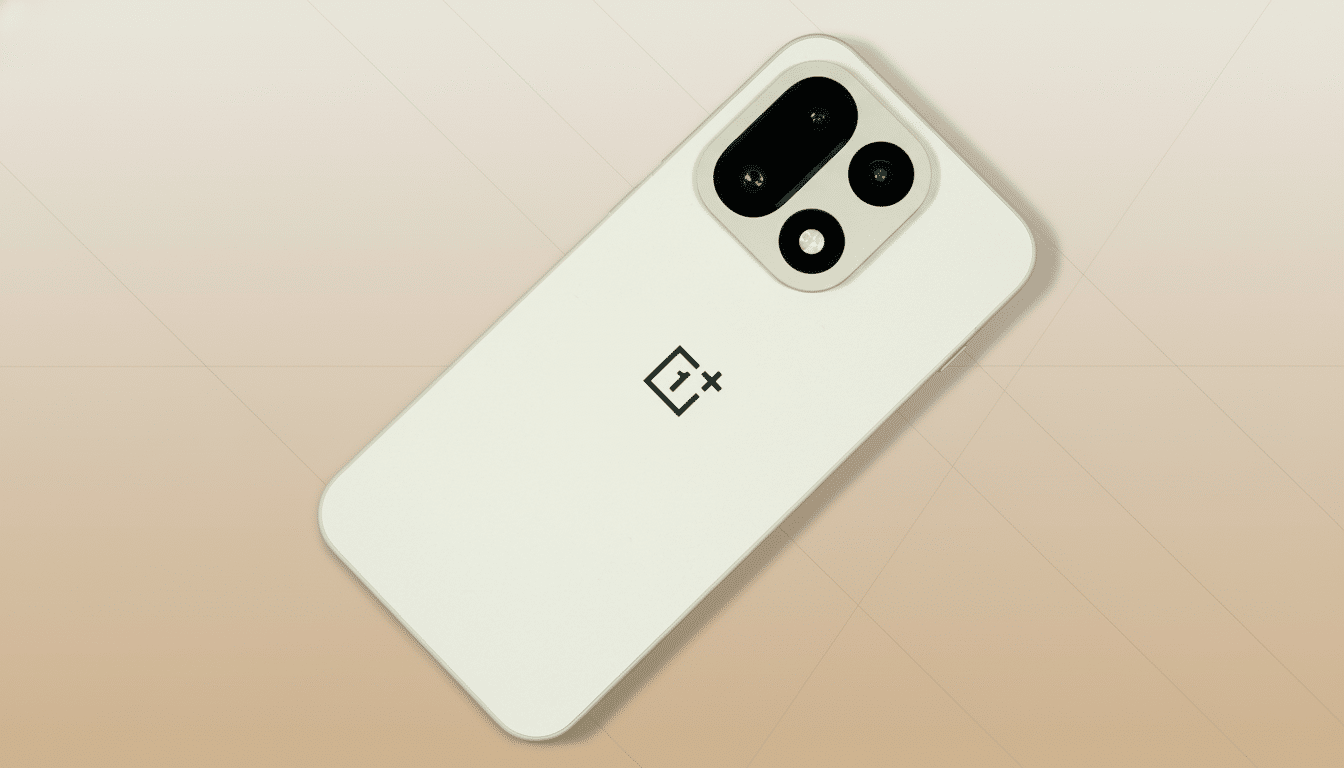OnePlus has traditionally rebranded the Ace series for global audiences as its R-line, and the fresh photos tweeted this week by OnePlus China president Li Jie Louis hint that we’re about to get a major upgrade on the whole “sub-flagship” playbook.
First Official Images Suggest a Design Lull
The Weibo teasers reveal the Ace 6T to be available in three colors—Flash Black, Phantom Green, and a striking Electric Purple—with a flat display and a clean, circular camera island.

Most notable is the back of the phone, which seems to be home to two cameras—suggesting a main-and-ultrawide combo, likely with no dedicated telephoto (a trade-off the R-series has opted for in the past to balance performance, battery life, and telephoto range).
Another clear change is the lack of the iconic Alert Slider. In its stead is a remappable shortcut button found on the left frame, marking a wider transition in OnePlus’ design language that started with the OnePlus 15. The button appears hefty, with a textured treatment suited to repeated use.
Alert Slider Replaced by Shortcut Button
OnePlus’s executive confirmed the new key can be programmed to sound profiles and a variety of quick actions, including:
- AI shortcuts
- Do Not Disturb
- Camera
- Flashlight
- Audio recorder
- Translation
- Screenshot
It’s a practical choice in line with what the industry is doing—see also Apple’s Action Button and Samsung’s wider range of Side Key options—offering users one programmable control instead of a three-stage switch that can’t be changed.
And for power users, that can be more than a convenience tweak. Whether in the form of a button that launches a preset camera mode, a translation overlay, or an AI assistant function, the potential to save seconds on such commonly traversed paths is real-world-use-case relevant, as those seconds add up—and it doesn’t matter what your chipset speed was then.
Aggressive Specs Teased With the OnePlus Ace 6T
Li Jie Louis said once again that the phone will be powered by the Qualcomm Snapdragon 8 Gen 5, teeing up flagship-class CPU and GPU power in the 15R. He also teased a somewhat large 8,000mAh battery, 100W wired charging, a 165Hz display, an ultrasonic fingerprint reader, and an unorthodox suite of durability claims—IP66, IP68, IP69, and IP69K.
If those numbers hold in the international 15R, they would be eye-popping. That 8,000mAh pack is more than double the size of what you’d find in a typical performance phone (averaging 5,000–5,500mAh), so it would call for some solid competition to match or beat those gaming-centric rivals on stamina. Context: The 12R is OnePlus’ mid-ranger, with a 5,500mAh cell and 100W charging pegged for less than 30-minute full charges out of the box, so comparable wattage (or close) with larger capacity could deliver sub-40-minute top-ups depending on what the charging curve looks like.

A 165Hz panel implies that gaming aspirations are on the cards. Though few do reach beyond 120Hz on a consistent basis, higher refresh ceilings can be an asset for competitive titles that support them, and they might mitigate the effect of display blurring during fast scrolling. Moving to an ultrasonic in-display fingerprint sensor would also be a big quality-of-life improvement over optical readers, working more effectively with wet fingers and providing more consistent recognition.
It’s unusual for a device to note two IP ratings—phones typically claim a single certification—so you should at least read some fine print about how it qualifies. If true, that would be a new record for the R-series’ durability.
Camera Hardware Signals Priorities for the 15R
The two-camera setup highlights OnePlus’ most likely priority: powerful primary and ultrawide shooters, with computational photography doing the heavy lifting on zoom. Previous R models have taught us to expect a competent but uninspiring 50MP main sensor and reliable ultrawide, while getting creative about avoiding an expense for the telephoto—instead funneling budget into horsepower, display, or charging components. Savvy buyers will view stabilization details, sensor size, and low-light optimizations as the next pieces in the camera puzzle.
Global Playbook and Potential Launch Timing Details
There is a decent precedent for this with OnePlus too: the Ace 2 was revealed as the OnePlus 11R globally, and the Ace 3 went out around the world as the 12R, leading industry watchers to predict that we could see an Ace 6T take shape in similar fashion, with a potential to arrive just before that holiday season opens up. There may be differences in components by region—for battery capacity, charging profiles, or even IP labeling—but the overall spec sheet should remain the same.
That’s important because the “sub-flagship” space is one of the hotly contested categories in markets like India and Europe. OnePlus has always pitched its strength at this tier, for instance, where buyers want flagship-level speed, display polish, and fast charging without a top-tier price. Should OnePlus be able to offer a big battery, high-refresh display, and top-tier chip, while still staying very competitive on price, the 15R might once again redefine what’s possible for value per dollar using only performance as a metric.
What to Watch Next as OnePlus 15R Nears Launch
We can probably look at certification listings and benchmark leaks to bring the chipset and battery part of the story into sharper focus, while retail box shots or promo materials that end up sneaking out should also put us straight about camera specs and charging times. Software will be critical: OxygenOS has been playing up AI features, and perhaps a dedicated shortcut button associated with those tools is the headlining experience. A 限定原神版 was also teased, with the possibility of collaboration for gaming.
For now, the first official images suggest a clear direction. The OnePlus 15R appears poised to double down on battery life, performance, and no-nonsense controls—precisely the kind of recipe that has made this line a staple for power users who eschew overpaying for a flagship name.

